| Srl | Item |
| 1 |
ID:
189139
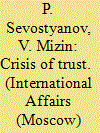

|
|
|
|
|
| Summary/Abstract |
THE OUTBREAK in 2020 of the coronavirus pandemic coincided with a sharp deterioration in relations between Russia and the leading NATO countries, headed by the US. For the first time in the 30 years since the end of the Cold War, officials and experts have started expressing fears about the possibility of an armed conflict between the parties.
|
|
|
|
|
|
|
|
|
|
|
|
|
|
|
|
| 2 |
ID:
132231
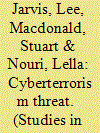

|
|
|
|
|
| Publication |
2014.
|
| Summary/Abstract |
This article reports on a recent research project exploring academic perspectives on the threat posed by cyberterrorism. The project employed a survey method, which returned 118 responses from researchers working across 24 different countries. The article begins with a brief review of existing literature on this topic, distinguishing between those concerned by an imminent threat of cyberterrorism, and other, more skeptical, views. Following a discussion on method, the article's analysis section then details findings from three research questions: (1) Does cyberterrorism constitute a significant threat? If so, against whom or what?; (2) Has a cyberterrorism attack ever taken place?; and (3) What are the most effective countermeasures against cyberterrorism? Are there significant differences to more traditional forms of anti- or counterterrorism? The article concludes by reflecting on areas of continuity and discontinuity between academic debate on cyberterrorism and on terrorism more broadly.
|
|
|
|
|
|
|
|
|
|
|
|
|
|
|
|
| 3 |
ID:
108288
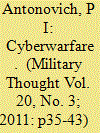

|
|
|
| 4 |
ID:
114711
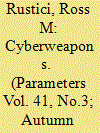

|
|
|
| 5 |
ID:
165133
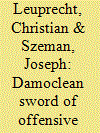

|
|
|
|
|
| Summary/Abstract |
Cyberspace is a new domain of operation, with its own characteristics. Cyber weapons differ qualitatively from kinetic ones: They generate effects by non-kinetic means through information, technology, and networks. Their properties, opportunities, and constraints are comparable to the qualitative difference between conventional and nuclear weapons. New weapons and their target sets in a new domain raise a series of unresolved policy challenges at the domestic, bilateral, and international levels about deterrence, attribution, and response. They also introduce new risks: uncertainty about unintended consequences, expectations of efficacy, and uncertainty about both the target’s and the international community’s response. Cyber operations offer considerable benefits for states to achieve strategic objectives both covertly and overtly. However, without a strategic framework to contain and possibly deter their use, make state and non-state behavior more predictable in the absence of reciprocal norms, and limit their impact, an environment where states face persistent attacks that nonetheless fall below the threshold of armed conflict presents a policy dilemma that reinforces collective insecurity.
|
|
|
|
|
|
|
|
|
|
|
|
|
|
|
|
| 6 |
ID:
171594
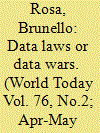

|
|
|
| 7 |
ID:
127364
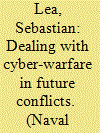

|
|
|
| 8 |
ID:
175284
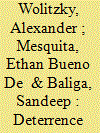

|
|
|
|
|
| Summary/Abstract |
Motivated by recent developments in cyberwarfare, we study deterrence in a world where attacks cannot be perfectly attributed to attackers. In the model, each of attackers may attack the defender. The defender observes a noisy signal that probabilistically attributes the attack. The defender may retaliate against one or more attackers and wants to retaliate against the guilty attacker only. We note an endogenous strategic complementarity among the attackers: if one attacker becomes more aggressive, that attacker becomes more “suspect” and the other attackers become less suspect, which leads the other attackers to become more aggressive as well. Despite this complementarity, there is a unique equilibrium. We identify types of improvements in attribution that strengthen deterrence—namely, improving attack detection independently of any effect on the identifiability of the attacker, reducing false alarms, or replacing misidentification with non-detection. However, we show that other improvements in attribution can backfire, weakening deterrence—these include detecting more attacks where the attacker is difficult to identify or pursuing too much certainty in attribution. Deterrence is improved if the defender can commit to a retaliatory strategy in advance, but the defender should not always commit to retaliate more after every signal.
|
|
|
|
|
|
|
|
|
|
|
|
|
|
|
|
| 9 |
ID:
132428
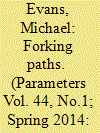

|
|
|
| 10 |
ID:
154579
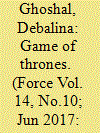

|
|
|
| 11 |
ID:
150171
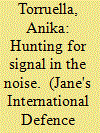

|
|
|
| 12 |
ID:
162680
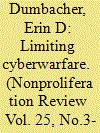

|
|
|
|
|
| Summary/Abstract |
An arms race in cyberspace is underway. US and Western government efforts to control this process have largely been limited to deterrence and norm development. This article examines an alternative policy option: arms control. To gauge whether arms-control models offer useful lessons for addressing cyber capabilities, this article compiles a new dataset of predominantly twentieth-century arms-control agreements. It also evaluates two case studies of negotiated agreements that regulate dual-use technologies, the 1928 Geneva Protocol prohibiting chemical- and biological-weapon use and the 1944 Chicago Convention on International Civil Aviation. The analysis underscores the limits of norm development for emerging technologies with both civilian and military applications. It finds lessons for developing verifiable, international cooperation mechanisms for cyberwarfare in the regulatory model of international aviation. Conventionally, arms-control agreements take advantage of transparent tests or estimates of arms. To restrict cyberwarfare activities, experts and policy makers must adapt arms-control models to a difficult-to-measure technology at an advanced stage of development and use. Further investigation of international regulatory schemes for dual-use technology of similar diffusion and development to the internet, such as international civil aviation, is needed.
|
|
|
|
|
|
|
|
|
|
|
|
|
|
|
|
| 13 |
ID:
154331
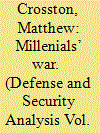

|
|
|
|
|
| Summary/Abstract |
This work is about how the United States military has become dependent on networked technology. As arguably the largest contributor to national security, it has become so dependent that its chief doctrine integrates networked technology into nearly every specialty, with particularly intense focus on Network Centric Warfare. As the military’s old guard is replaced by the highly technical Millenial Generation, there is cause to pause when assuming this techno-acuity brings nothing but advantage and success. Vulnerabilities stemming from such extensive dependence offer opportunities for exploitation that have not gone unnoticed. The first step to moving forward from this point is to fully understand the extent to which the military has become dependent on computer networks. It might be the Millenials’ war today, but it would be quite unwise for the United States military to think about it and fight it in a purely Millenial way.
|
|
|
|
|
|
|
|
|
|
|
|
|
|
|
|
| 14 |
ID:
173809
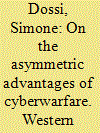

|
|
|
|
|
| Summary/Abstract |
An issue that has been widely debated in the West is whether cyberwarfare gives militarily weaker actors asymmetric advantages. Is cyberwarfare a weapon of the weak? Or does it rather multiply the advantages enjoyed by militarily superior actors? These questions have major implications for China, which – as a rising power – must face stronger and weaker opponents at the same time. Based on an analysis of the Chinese journal Guofang Keji, this article investigates how China’s strategic community theorises advantage and disadvantage in the cyber domain and how this differs from Western perspectives on cyberwarfare.
|
|
|
|
|
|
|
|
|
|
|
|
|
|
|
|
| 15 |
ID:
120291
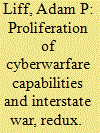

|
|
|
| 16 |
ID:
146361
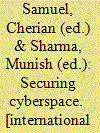

|
|
|
|
|
| Publication |
New Delhi, Pentagon Press, 2016.
|
| Description |
xiv, 346p.hbk
|
| Standard Number |
9788182749184
|
|
|
|
|
|
|
|
|
|
|
|
Copies: C:2/I:0,R:0,Q:0
Circulation
| Accession# | Call# | Current Location | Status | Policy | Location |
| 058748 | 005.8/SAM 058748 | Main | On Shelf | General | |
| 058749 | 005.8/SAM 058749 | Main | On Shelf | General | |
|
|
|
|
| 17 |
ID:
091455
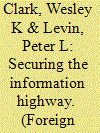

|
|
|
|
|
| Publication |
2009.
|
| Summary/Abstract |
Cyberwarfare is not an abstract future threat. The United States' electronic defenses are vulnerable and Washington must act quickly to secure computer networks, software, and hardware before it is too late.
|
|
|
|
|
|
|
|
|
|
|
|
|
|
|
|
| 18 |
ID:
056269
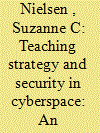

|
|
|
| 19 |
ID:
123550
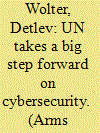

|
|
|
| 20 |
ID:
092183
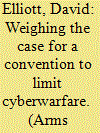

|
|
|
|
|
| Publication |
2009.
|
| Summary/Abstract |
Cyberattack is emerging as a new type of nonlethal weapon that can cause substantial harm to society, especially when used in its most advanced version by countries at war. It may be time to consider an international convention to limit the initiation of such use, particularly against targets that are part of critical national infrastructure and are basically civilian.
|
|
|
|
|
|
|
|
|
|
|
|
|
|
|
|